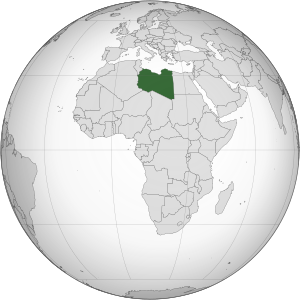
In 2003, Libyan leader Muammar Gaddafi agreed to eliminate his country's weapons of mass destruction program, including a decades-old nuclear weapons program.[1] Mohamed ElBaradei, head of the International Atomic Energy Agency, said Libya's nuclear program was "in the very initial stages of development" at the time.[2]
In 1968, Libya signed the Nuclear Non-Proliferation Treaty (NPT), ratified the treaty in 1975, and concluded a safeguards agreement in 1980. Despite its commitment to NPT, there are reports indicating that Gaddafi either made unsuccessful attempts to build or entered in an agreement to purchase a nuclear weapon from nuclear-armed nations. In the 1970s–80s, Gaddafi made numerous attempts to accelerate and push forward his ambitions for an active nuclear weapons program, using the nuclear black market sources. However, after the end of the Cold War in 1991, Gaddafi sought to resolve its nuclear crises with the United States aiming to uplift the sanctions against Libya, finally agreeing to authorize rolling back Libya's weapons of mass destruction program on 19 December 2003.
As of 2013, over 800 tons of chemical weapons ingredients remained to be destroyed.[3] In February 2014, the new Libyan government announced that it had finished destroying Libya's entire remaining Gaddafi-era stockpile of chemical weapons. Full destruction of chemical weapons ingredients was scheduled to be completed by 2016.[4]
- ^ "Libya | Country Profiles". NTI. Archived from the original on 2013-10-06. Retrieved 2013-10-09.
- ^ Cite error: The named reference
autogenerated3was invoked but never defined (see the help page). - ^ Cite error: The named reference
nti_11_sep_2013_remains_on_holdwas invoked but never defined (see the help page). - ^ Text by FRANCE 24. "Libya destroys last of Gaddafi's chemical weapons - France". France 24. Archived from the original on 2014-02-05. Retrieved 2014-02-05.
{{cite web}}: CS1 maint: numeric names: authors list (link)